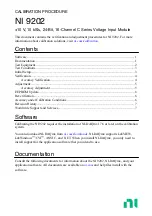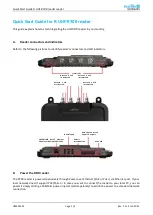
Glossary: Frequently used Terms and Abbreviations
R&S
®
OSP
323
User Manual 1178.7100.02 ─ 05
I
Interlock:
An installation that that prevents operating certain equipment as long as a
given mechanism is not in a desired state. For example, while the door of an anechoic
chamber is open, the door's interlock can disable a signal generator or amplifier and a
connected antenna from emitting RF radiation. Hence, this interlock prevents emitting
RF power into the chamber, while an operator may still be inside.
L
LAN:
Local area network within a limited space, such as an office building. A LAN con-
nects computers or electronic equipment that has processing capability. It uses net-
work media technologies such as Ethernet (over electric or fiber-optic cables, accord-
ing to the IEEE 802.3 standards) or wireless LAN (Wi-Fi, according to IEEE 802.11).
LCD:
Liquid-crystal display
LVC:
Low voltage CMOS, referring to standardized power supply voltage levels of 3.3,
3.0, 2.5, 1.5, 1.2 and 1.0 volts.
M
MOS-FET:
Metal-oxide-semiconductor field-effect transistor
N
N:
A ruggedized coaxial RF connector, originally developed for navy (N) applications.
N can also stand for the inventor Paul Neill.
O
ODU connector:
A type of push-pull circular connector from manufacturer ODU
GmbH, Mühldorf, Germany
OLED:
Organic light-emitting diode
OTA:
Over-the-air, referring to wireless RF tests and applications
P
PC:
Precision coaxial RF connector
R
RF:
Radio frequency, electromagnetic oscillation in the range of 3
kHz to 300
GHz
RGB:
Red, green and blue colors (for example of the pixels in a display)
S
SCPI:
Standard commands for programmable instruments (see
), based on Standard Codes and Formats, IEEE-488.2, allows controlling program-
mable devices in test and measurement systems





































